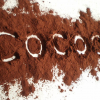I don't know how much it has either, but adding Solaray's
Rosemary Extract to the
CILTEP stack causes a very interesting sensation... I kind of feel like I'm floating underwater, especially if I close my eyes. It's weird because you'd think it would cause nausea, but it does not. It definitely causes a sort of relaxation that Artichoke does not. I don't have anxiety, but it might be interesting for someone with anxiety to try rosemary + forskolin and let us know the results.
Rosemary has been show to increase well being, and memory accuracy.
Int J Neurosci.
2003 Jan;113(1):15-38.
Aromas of rosemary and lavender essential oils differentially affect cognition and mood in healthy adults.
Moss M, Cook J, Wesnes K, Duckett P.
Source
Human Cognitive Neuroscience Unit, Division of Psychology, Northumberland Building, University of Northumbria, Newcastle upon Tyne, NE1 8ST, UK. mark.moss@unn.ac.uk
Abstract
This study was designed to assess the olfactory impact of the essential oils of lavender (Lavandula angustifolia) and rosemary (Rosmarlnus officinalis) on cognitive performance and mood in healthy volunteers. One hundred and forty-four participants were randomly assigned to one of three independent groups, and subsequently performed the Cognitive Drug Research (CDR) computerized cognitive assessment battery in a cubicle containing either one of the two odors or no odor (control). Visual analogue mood questionnaires were completed prior to exposure to the odor, and subsequently after completion of the test battery. The participants were deceived as to the genuine aim of the study until the completion of testing to prevent expectancy effects from possibly influencing the data. The outcome variables from the nine tasks that constitute the CDR core battery feed into six factors that represent different aspects of cognitive functioning. Analysis of performance revealed that lavender produced a significant decrement in performance of working memory, and impaired reaction times for both memory and attention based tasks compared to controls. In contrast, rosemary produced a significant enhancement of performance for overall quality of memory and secondary memory factors, but also produced an impairment of speed of memory compared to controls. With regard to mood, comparisons of the change in ratings from baseline to post-test revealed that following the completion of the cognitive assessment battery, both the control and lavender groups were significantly less alert than the rosemary condition; however, the control group was significantly less content than both rosemary and lavender conditions. These findings indicate that the olfactory properties of these essential oils can produce objective effects on cognitive performance, as well as subjective effects on mood.
PMID: 12690999
Interestingly, the artichoke source I've been taking,
Nature's Herbs Artichoke Extract, lists rosemary oil as a preservative. It's probably not much, but at some point I plan to try a different source in order to see if I notice a difference.
An update on my stack:
During the week days, I wake up, take 5mg Adderall, 2 Artichoke Extracts capsules, and 25mg Forskolin. I then go back to sleep for about 30 minutes, and then wake up ready to take on the world. Then, for lunch, I eat some eggs cooked in olive oil and take 5mg Selegiline.
On the weekends, I cut out the Adderall, and replace it with about 50mg of caffeine. If I wake up and take the artichoke + forskolin without it, it actually makes going back to sleep feel really, really pleasurable for some reason. Since going back to sleep keeps me from getting anything done with my day, haha, caffeine has been important for me to add on the weekend.
Eventually, I'm hoping to knock the Adderall out of my stack, and at least take a lower dose of Selegiline. I hope at some point in the future, Artichoke + Forskolin + Caffeine + cognitive training may be my cure for ADD/low motivation. I have yet to develop a tolerance to my current stack over the past month and a half, so I hope that I never do.
I should be getting in a Forskolin shipment soon from a different source. Significantly cheaper too (
720 capsules x 20mg for $49).
Edited by zrbarnes, 01 May 2012 - 11:49 PM.



















































